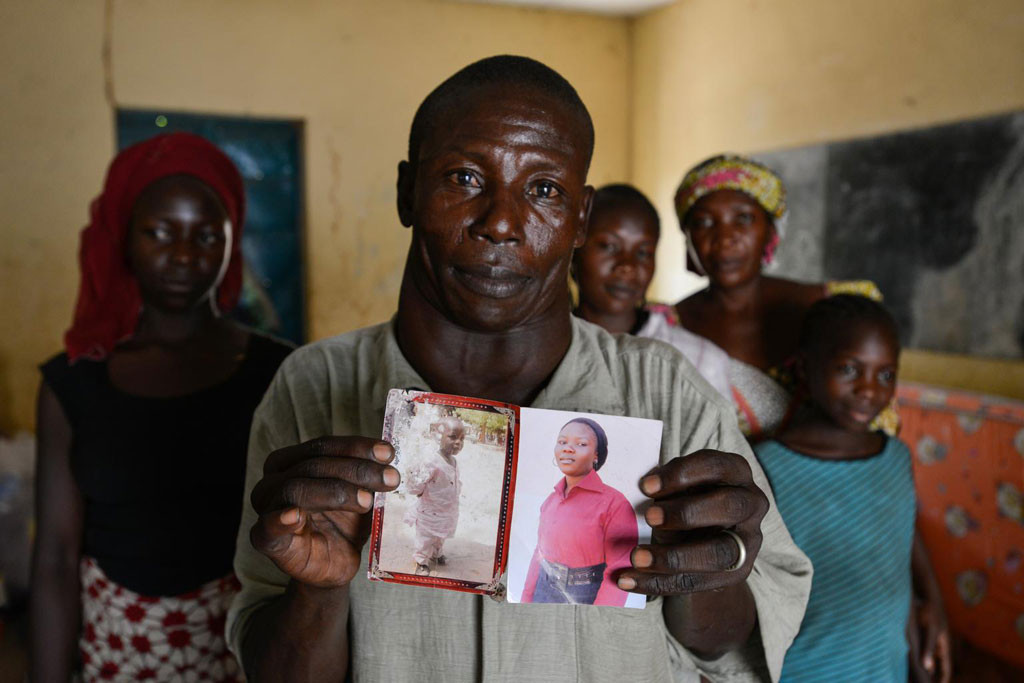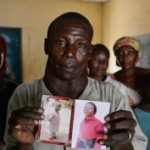On 26 March, (foreground) Hassan Adamo stands with the remaining members of his family, in the Gire 1 camp for internally displaced people, near Yola, the capital of Adamawa, a state in the country’s north-east. He is holding photographs of his eldest daughter, 18, and his 6-year-old son, both of whom were kidnapped by members of Boko Haram during an attack on the family’s village. The soldiers also burned Mr. Adamo’s home to the ground and shot all his cattle. Over two months have passed since then, and he has not heard from his missing children. The camp is located on the grounds of a primary school.
In March 2015 in Nigeria, 15.5 million people, including 7.3 million children, are affected by the continuing crisis in the country’s north-eastern region. More than 1.2 million Nigerians have fled their homes as a result of violence and attacks by Boko Haram insurgents that have escalated since the beginning of 2015. Many of the displaced, most of whom are children and women, are sheltering with in host communities that have limited resources, and in formal and informal camps. All are in urgent need basic supplies, health and nutrition services, and critical water sanitation and hygiene support to prevent the spread of disease. Over 150,000 people – the vast majority children and women – have also fled to neighbouring Cameroon, Chad and Niger, further straining vulnerable communities – some of which are already facing food insecurity and malnutrition, are prone to disease outbreaks and natural disasters, and often already host hundreds of thousands of refugees, returnees and migrants who have escaped violence and hardship throughout the region. The impact of the crisis on children and women is of particular concern. Many of them have lost their homes and belongings –escaping with only the clothing they were wearing; and some have walked for days – or even weeks – to find refuge. Many children in the region have been traumatized and are in need








